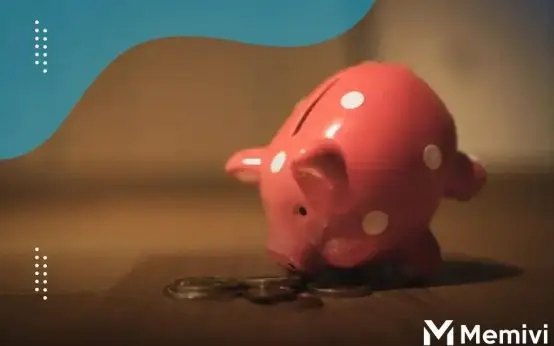
Junior ISAs are a fantastic way to save money free of tax for your child’s future needs. With options designed specifically for children, they offer a reliable method to build a solid financial foundation early on.
Understanding Junior ISAs
A Junior Individual Savings Account (Junior ISA) is a type of savings account designed specifically for children in the UK. Introduced to replace the Child Trust Fund, Junior ISAs help parents and guardians to save for their child’s future in a tax-efficient way. These accounts allow the savings to grow without any tax deductions on income or capital gains.
There are two types of Junior ISAs: cash Junior ISAs and stocks and shares Junior ISAs. A cash Junior ISA works similarly to a standard savings account, providing a secure place for savings while earning interest over time. The stocks and shares Junior ISA, on the other hand, allows the money to be invested in the stock market, offering a potentially higher return but with more risk.
Eligibility to open a Junior ISA is straightforward. A child can have a Junior ISA if they are under 18, living in the UK, and do not have a Child Trust Fund. It’s important to note that each child can only have one cash Junior ISA and one stocks and shares Junior ISA, but you can transfer savings across different providers to take advantage of competitive rates.
Funds in a Junior ISA are locked until the child reaches 18, ensuring that the money saved is used for their future needs. Once the child turns 18, their Junior ISA automatically becomes a regular ISA, allowing them to continue saving tax-free. Parents, grandparents, and friends can contribute up to the annual limit (£9,000 for the current tax year) to support the child’s financial journey.
Benefits of Investing in Junior ISAs

Investing in Junior ISAs offers several long-term advantages that can significantly impact your child’s financial security. One of the primary benefits is the tax-free growth on investments, meaning any interest or profits earned within the account are not subject to income or capital gains tax. This allows the savings to accumulate more rapidly than in a standard savings account.
Additionally, Junior ISAs encourage a habit of saving and financial literacy from a young age. By involving children in discussions about their Junior ISA, they can learn important financial concepts such as saving for the future, understanding investment risks, and setting financial goals. This early exposure can lead to better financial decision-making in adulthood.
Flexibility is another significant benefit. Parents and guardians have the ability to choose between cash Junior ISAs, which are safer and more stable, or stocks and shares Junior ISAs, which potentially offer higher returns albeit with more risk. This choice allows families to tailor the investment strategy according to their risk tolerance and financial objectives.
Moreover, the generous contribution limits of Junior ISAs enable significant sums to be set aside annually, maximizing the potential growth over the years. It’s important to note that funds in a Junior ISA are locked until the child turns 18, which ensures that the savings grow without interruptions for their future needs.
How to Open a Junior ISA Account
Opening a Junior ISA account is a straightforward process, but it involves several important steps to ensure you’re starting correctly.
- Eligibility:
To open a Junior ISA, the child must be a UK resident under 18 years old. A parent or guardian needs to set up the account on their behalf, but once the account is open, further contributions can be made by anyone.
- Choose the Type:
There are two types of Junior ISAs: Cash Junior ISAs and Stocks and Shares Junior ISAs. Decide which suits your child’s long-term financial goals. Cash ISAs are safer but usually offer lower returns, while Stocks and Shares ISAs can potentially offer higher returns but come with more risk.
- Select a Provider:
Research different banks and financial institutions that offer Junior ISAs. Compare their interest rates, management fees, and other perks. Some providers may also offer tools or resources to help teach your child about saving and investing.
- Complete the Application:
Once you’ve chosen a provider, fill out the application form they provide. You’ll need to provide your personal information as well as your child’s details. This may include proof of identity and address for both you and your child.
- Make the Initial Deposit:
Junior ISAs generally require an initial deposit, so be prepared to transfer funds into the account to activate it. Remember, the combined annual contribution limit for all Junior ISAs is set by the government, and it’s important to stay within this limit.
- Manage the Account:
Once the account is open, monitor its progress. Set up regular contributions if possible, and take advantage of any opportunities to boost the account’s value, such as encouraging family and friends to contribute as a gift for birthdays or holidays.


 The Pros and Cons of Renting vs. Buying in the UK’s Current Market <p class='sec-title' style='line-height: normal; font-weight: normal;font-size: 16px !important; text-align: left;margin-top: 8px;margin-bottom: 0px !important;'> Before diving into any major decision, it's important to evaluate both the advantages and potential downsides. </p>
The Pros and Cons of Renting vs. Buying in the UK’s Current Market <p class='sec-title' style='line-height: normal; font-weight: normal;font-size: 16px !important; text-align: left;margin-top: 8px;margin-bottom: 0px !important;'> Before diving into any major decision, it's important to evaluate both the advantages and potential downsides. </p>  Car Finance Explained: HP vs. PCP in the UK and Which is Right for You <p class='sec-title' style='line-height: normal; font-weight: normal;font-size: 16px !important; text-align: left;margin-top: 8px;margin-bottom: 0px !important;'> Avoid common pitfalls and learn how to secure the best car loan deals. </p>
Car Finance Explained: HP vs. PCP in the UK and Which is Right for You <p class='sec-title' style='line-height: normal; font-weight: normal;font-size: 16px !important; text-align: left;margin-top: 8px;margin-bottom: 0px !important;'> Avoid common pitfalls and learn how to secure the best car loan deals. </p>  Protecting Your Money: Understanding the FSCS in the UK <p class='sec-title' style='line-height: normal; font-weight: normal;font-size: 16px !important; text-align: left;margin-top: 8px;margin-bottom: 0px !important;'> Protecting Your Money is crucial in today's digital age where financial risks are everywhere. </p>
Protecting Your Money: Understanding the FSCS in the UK <p class='sec-title' style='line-height: normal; font-weight: normal;font-size: 16px !important; text-align: left;margin-top: 8px;margin-bottom: 0px !important;'> Protecting Your Money is crucial in today's digital age where financial risks are everywhere. </p>